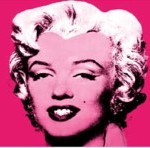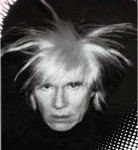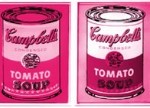在一个纽约拍卖会上,安迪·沃霍尔的两幅自画像分别以两千七百万美元和三千万美元的价格成交。其实,早在1963年,他的作品《Eight Elvises》就曾以一千万美元的价格出手。而他的成功,源自我们大多数人都不会多看一眼的可口可乐的瓶子。
把高雅艺术变成品牌的安迪·沃霍尔 Andy Warhol:Turn High Art into a Brand
By the mid-1950s, Andy’s career in commercial illustration was really taking off. But what he wanted more than ever was to become a famous artist.
到了上世纪五十年代中期的时候,安迪商业插画的职业生涯真正起步。但那个时候他却比任何时候都更想成为一名知名艺术家。
Andy’s first illustration after leaving Pittsburgh for this article “Success is a job in New York,” now seems incredibly apt ’cause within a couple of years he’d become one of the city’s hottest commercial artists. His work had appeared in Glamour, Vogue, Harper’s Bazaar. He did record sleeves and book jackets and dressed windows for department stores. By the time he was 27, he was already making more than $100,000 a year, which was big money in the 50s. But he still dreamt of being a real artist.
安迪当年离开匹兹堡后的第一份工作是为文章《在纽约,成功是一份职业》配图。这件事如今来看再恰当不过了,因为几年之后,他就会成为这座城市里最炙手可热的商业艺术家之一。他的作品出现于《Glamour》、《Vogue》和《Harper’s Bazaar》杂志,他也做唱片封套以及图书软封设计,还为百货商店设计布置橱窗。他27岁的时候,每年的收入已经超过十万美元。在上世纪五十年代,那可是笔大数目!可他依然梦想着成为真正意义上的艺术家。
For his work to be taken seriously as art rather than just illustrations, it had to be about something. It had to comment on the world around him and make people look at it differently. And the world that Andy saw was “boom-time America.” This poor kid who’d grown up during the 1)Great Depression was obsessed by the 50s consumer revolution: the 2)glossy commercials for shiny cars, the new supermarkets crammed with undreamt of varieties of food. He loved this mass-produced world of plenty, and, with his commercial background, Andy thought he could create art that reflected it.

如果他要让自己的作品被看成严肃的艺术,而非仅仅是插画,那么作品必须能传达出一些东西,必须传达出对周遭世界的态度和观点,让人刮目相看。而安迪当时看到的正是繁荣的美国。这个穷苦人家的孩子是在大萧条时期长大的,此刻他正着迷于上世纪五十年代的消费革命:光纸印刷的闪闪发亮的汽车广告,超市里堆满了做梦都想不到的种类繁多的食品。他热爱这个通过工业化大批量生产创造的丰富物质世界,结合他自己已有的商业设计经验,安迪认为他可以创造出反映这一现象的作品。
Andy loved Coca-Cola that he thought “Why shouldn’t a bottle of Coke be a work of art?” And the next thing he did was so crucial in his development as an artist because he created this. And look, you can tell at once that suddenly here’s a much stronger, bolder style that’s all his own. It might not seem like much, but deciding to 3)depict a commercial object on the canvass, and deciding to present it in this very clean and graphic, very mechanical mode, well, it was a huge deal in the art world at the time. And this turned Andy into the champion of a new movement called “pop art.”
安迪爱喝可口可乐,他想到,“为什么可乐瓶子不能成为一件艺术作品呢?”他接下来做的事在他成为艺术家的道路上具有决定性意义,因为他创造出了这个。你瞧,你能很快判断出这幅作品的处理方式更强烈,轮廓鲜明,这就是他独有的风格。表面上看似乎没有什么大不了的,但是选择在画布上画一个商品,而且以如此整洁、图形化、机械的方式将其呈现,在当时的艺术界,这都属颠覆性的做法。而这些则让安迪成了一场新的艺术运动——波普艺术运动——的倡导者。
Artists have always painted things from their everyday lives, like hay carts, vases of flowers, bowls of fruit. What “pop art” said was that stuff from the commercial world and popular culture could also be art. And that’s how 32 cans of soup made onto the walls of America’s most important modern art museum. And these paintings are among the most famous modern art pictures in the world.
艺术家以往也一直在画一些他们日常生活中的事物,比如干草车、插着花的花瓶、盛着水果的碗等。波普艺术则告诉人们,商品世界以及流行文化同样可以成为艺术。这就是为什么32个浓汤罐头能够在美国最重要的现代艺术博物馆中占据一整面墙,而这些绘画作品也因此成为世界上最为知名的现代艺术作品之一。
With these soup cans Andy finally managed to break into the fine art world, with a landmark solo exhibition in 1962.
 通过这些浓汤罐头,安迪最终以1962年里程碑式的个展打入了现代艺术殿堂。
通过这些浓汤罐头,安迪最终以1962年里程碑式的个展打入了现代艺术殿堂。
Now when they were first shown, most people thought they were a joke, but they really mark Andy’s coming of age as a pop painter. The bright colours, the crisp, mechanical technique, the presentation of a series of nearly identical images: they were all things that Andy would play with again and again. Like so much of his later work, these paintings were about capitalism; they’re about the consumer society. Really they’re about us.
当这些罐头作品第一次被展出的时候,多数人都以为这不过是个玩笑,但是它们的确是安迪作为成熟波普画家的标志。明快的色调,轻快的感觉,冷酷的画风,这一系列几近一模一样的图像被同时呈现。这些都是安迪会一玩再玩的元素。就像他晚期大量的作品一样,这些绘画作品是关于资本主义和消费社会的。实际上,它们与我们息息相关。
Andy had begun a revolution, and what could now be classified as art would never be the same again.
安迪掀起了一场革命,从此,艺术领域将与此前大不相同。
Like it or not, we’ve Andy Warhol to thank for today’s artists, they’re obsessed with consumer culture and everyday objects. Now artists can take anything ordinary—cola cans, designer trainers, Japanese cartoons—stick ’em in a gallery and declare it art.
无论你是否喜欢,今天着迷于消费文化以及日常生活用品的艺术家们都要感谢安迪·沃霍尔。如今,他们可以随便把一件司空见惯的物品,比如可乐罐、设计师设计的运动鞋、日本卡通,作为创作对象,把它们放在画廊中,并宣称这是艺术。
Today, nearly 50 years after his glory days as a pop artist, his work has moved out of the gallery and into our everyday lives. It’s so strong, so reproducible, that it appears everywhere. With Andy Warhol, high art became a brand. His art about modern consumer culture had become part of it.
今天,安迪作为一名波普艺术家的辉煌时期已经过去将近五十年了。他的作品已经被搬出了画廊,也出现在我们日常生活中。他的作品如此强悍,如此容易被复制,以至于随处可见。因为有了安迪·沃霍尔,高雅艺术变成了一种品牌,他那些关于现代消费文化的作品已经成为消费文化的一部分。




